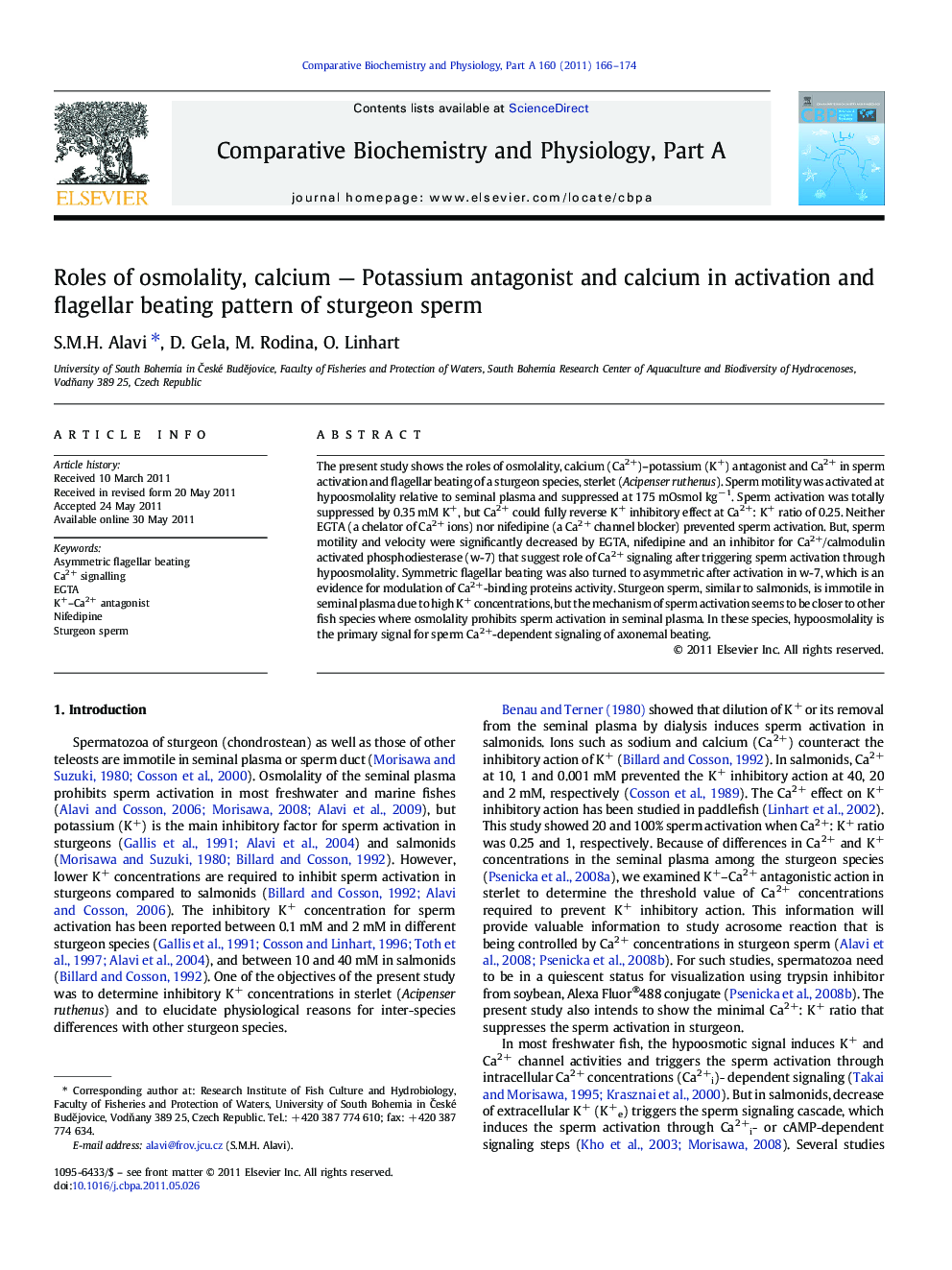| Article ID | Journal | Published Year | Pages | File Type |
|---|---|---|---|---|
| 10818989 | Comparative Biochemistry and Physiology Part A: Molecular & Integrative Physiology | 2011 | 9 Pages |
Abstract
The present study shows the roles of osmolality, calcium (Ca2+)-potassium (K+) antagonist and Ca2+ in sperm activation and flagellar beating of a sturgeon species, sterlet (Acipenser ruthenus). Sperm motility was activated at hypoosmolality relative to seminal plasma and suppressed at 175 mOsmol kgâ 1. Sperm activation was totally suppressed by 0.35 mM K+, but Ca2+ could fully reverse K+ inhibitory effect at Ca2+: K+ ratio of 0.25. Neither EGTA (a chelator of Ca2+ ions) nor nifedipine (a Ca2+ channel blocker) prevented sperm activation. But, sperm motility and velocity were significantly decreased by EGTA, nifedipine and an inhibitor for Ca2+/calmodulin activated phosphodiesterase (w-7) that suggest role of Ca2+ signaling after triggering sperm activation through hypoosmolality. Symmetric flagellar beating was also turned to asymmetric after activation in w-7, which is an evidence for modulation of Ca2+-binding proteins activity. Sturgeon sperm, similar to salmonids, is immotile in seminal plasma due to high K+ concentrations, but the mechanism of sperm activation seems to be closer to other fish species where osmolality prohibits sperm activation in seminal plasma. In these species, hypoosmolality is the primary signal for sperm Ca2+-dependent signaling of axonemal beating.
Keywords
Related Topics
Life Sciences
Biochemistry, Genetics and Molecular Biology
Biochemistry
Authors
S.M.H. Alavi, D. Gela, M. Rodina, O. Linhart,
